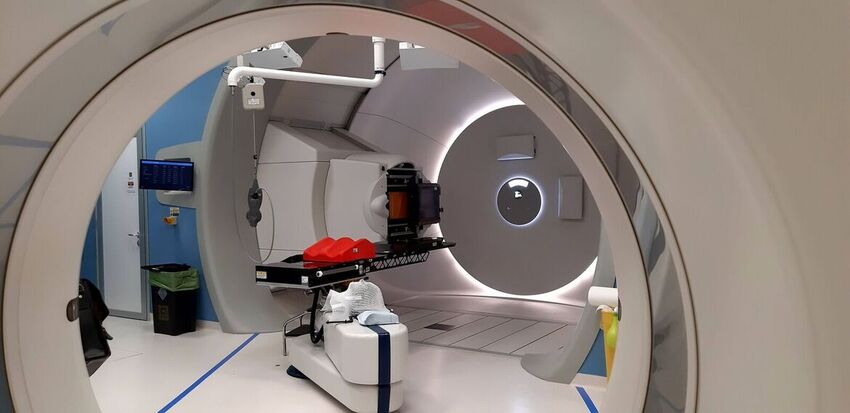Discrete Proton Arc Therapy (PAT) fully commissioned and validated at the Trento Proton Therapy Center
Dienstag, 15 Oktober 2024
Radiotherapy is one of the most important pillars of modern tumor treatment, combining excellent antitumoral activity with optimal patient quality of life during and after treatment, resulting in encouraging overall cure rates within todays multimodal/multidisciplinary tumor therapy framework.

Proton therapy can help to further improve clinical outcome in a significant subset of patients with certain clinical characteristics.
A new treatment planning and delivery technique that combines the dosimetric advantages of Proton Arc Therapy permanent beam delivery during simultaneous gantry rotation (a treatment paradigm that had revolutionized photon radiotherapy in the recent past) with the standard treatment workflow with fixed proton beams has recently been suggested and theoretically evaluated by a series of preclinical studies.
This so-called "Discrete PAT" approximates fully rotational delivery with 20-30 discrete static beams that are comprehensively optimized and sequentially delivered.
A comprehensive analysis of treatment planning optimization approach and beam delivery strategies for the Trento proton facility performed by the Medical Physics group of APSS in collaboration with the medical team of the Proton Center and RaySearch Laboratories (company providing the treatment planning system), with support of IBA and ELEKTA (providers of proton therapy system and treatment delivery software/OIS) has recently been concluded and its results have been presented at several international conferences and been submitted to a peer reviewed international scientific journal.
This analysis demonstrated that the theoretical advantages of PAT (further reduction of the dose to healthy tissues close to the target and the integral dose to the patient body, steeper dose gradients, potentially higher biological activity in the tumor) can almost fully be achieved with this "step-and-shoot" approach, which has the advantage that it is feasible within an already clinically fully established workflow and therefore with optimal dosimetric accuracy/reliability.
This treatment type can already be executed with maximum quality almost within a regular proton therapy treatment slot and can therefore now be offered, for the first time Worldwide to patients that most benefit from this more refined technique.
With further technical optimization in the interplay of the treatment control software and delivery system, delivery times will be significantly shorter than today’s high-quality treatment techniques and will therefore help to further facilitate patients access to high quality proton therapy worldwide.
Via Al Desert n.14, 38123 Trento
MAIL:
protonterapia@apss.tn.it
TELEFON:
+39 0461 1953100
Öffnungszeiten: Lun - Ven | 8.30 - 16.00







